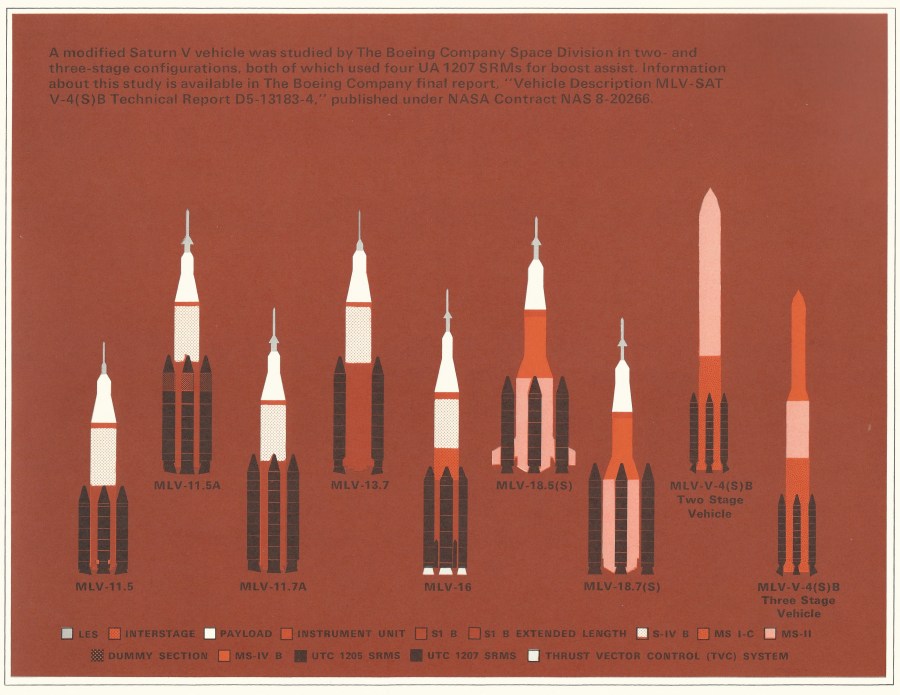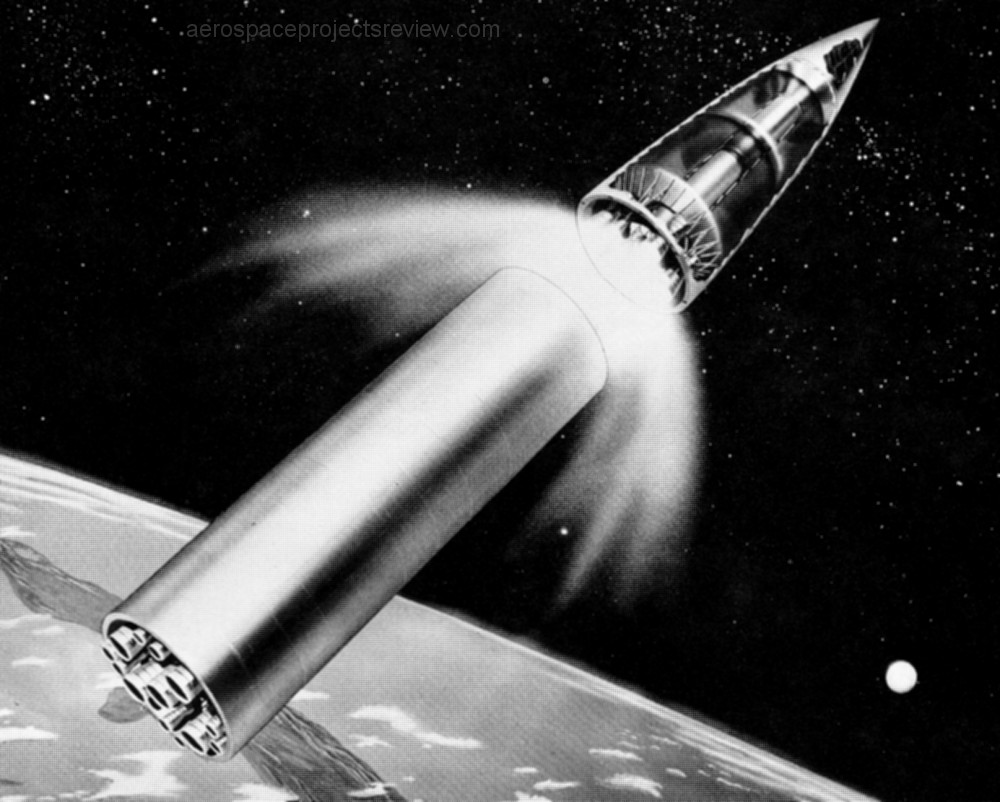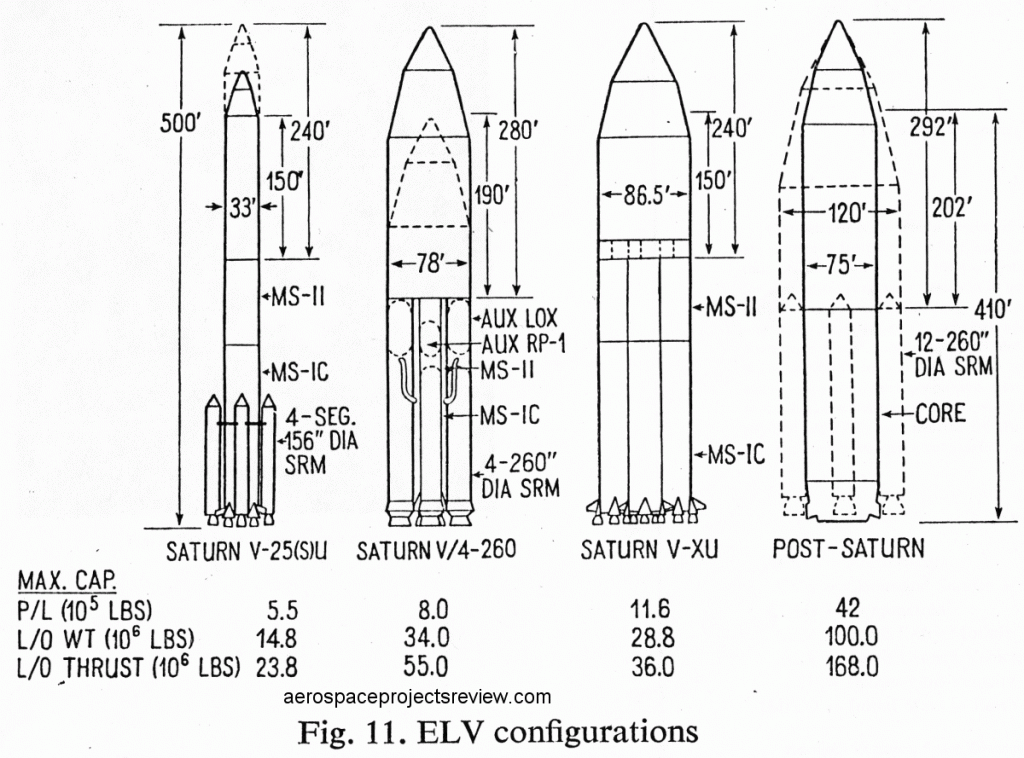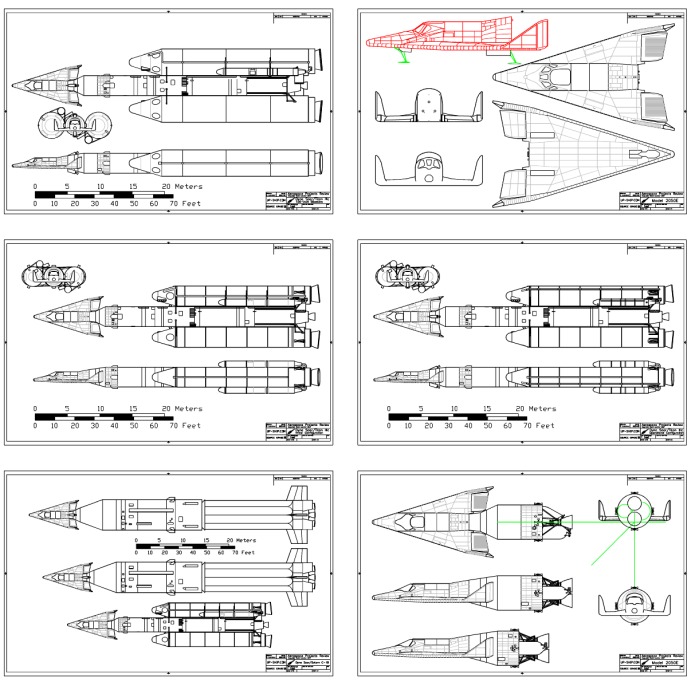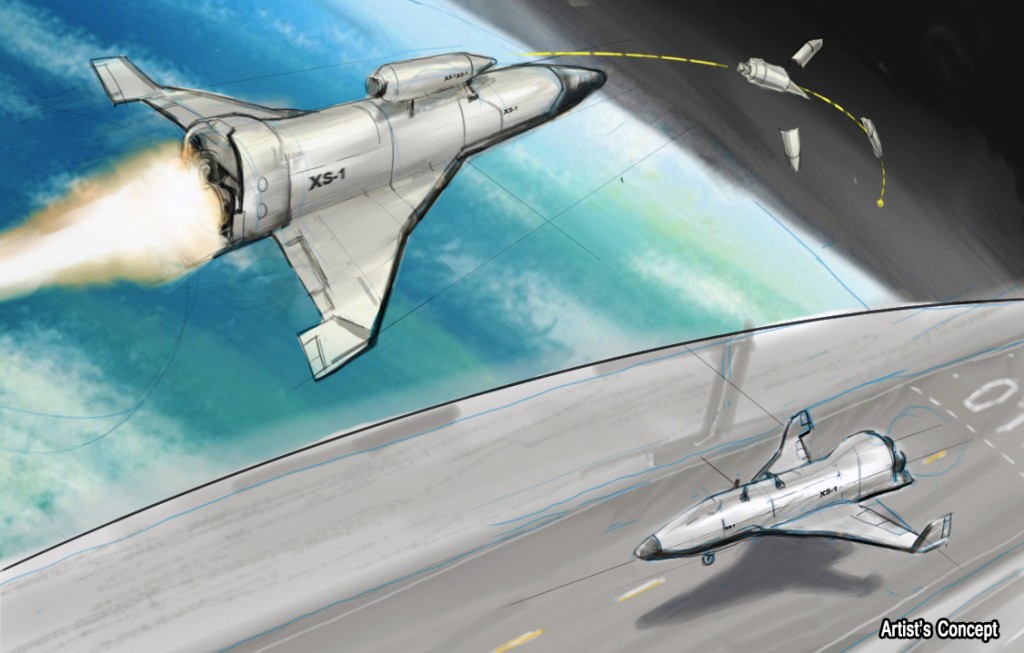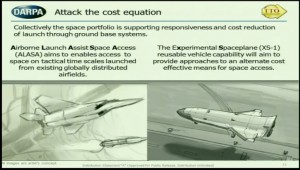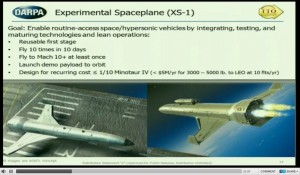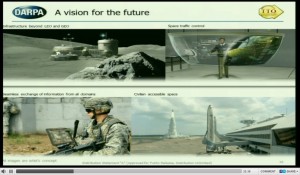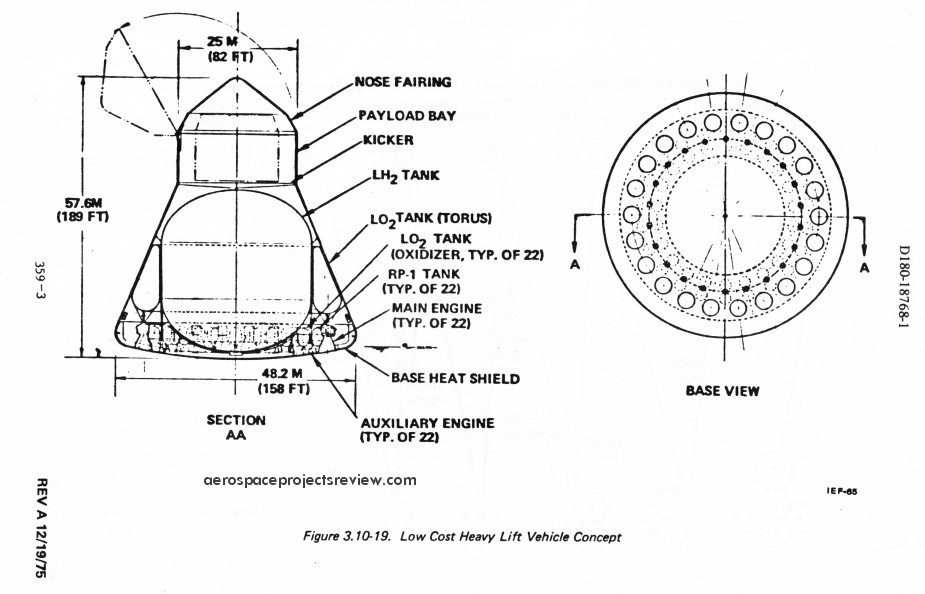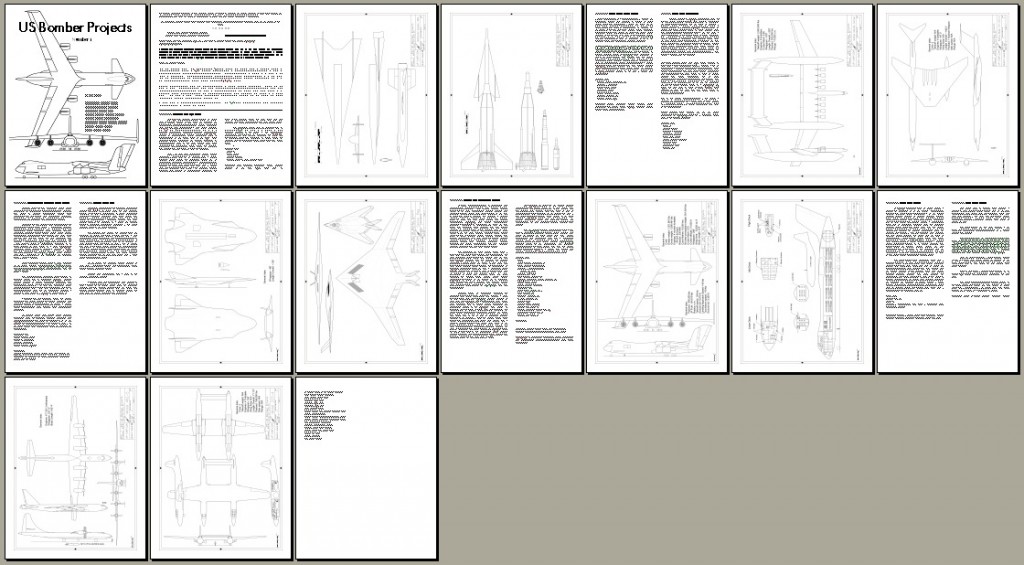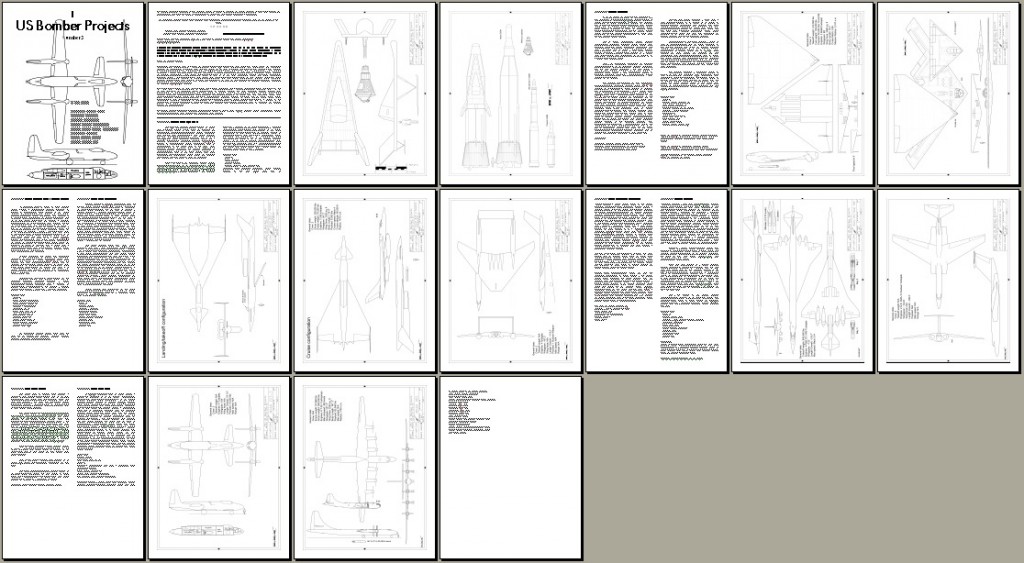A Saturn Ib with four UA-1205 solid rocket boosters.
Artwork of a three-stage rocket designed by Krafft Ehricke around 1953. 126 feet tall, it would be capable of orbiting 11,000 pounds of payload into a 600 mile circular orbit. Liftoff weight would be 1.3 million pounds.
The first stage, here being shown dropped, would be parachute recovered. the second stage would be expended; the third stage would be used to built up a space station. If you can’t immediately tell where stage 2 ends and stage 3 begins, it’s because stage 3 is the central cylinder, with stage 2 being wrapped around it. This sort of staging arrangement was considered fairly often in the days before they actually had to build these things.
It would be able to land 3,000 pounds on the moon or shoot 5,000 pound probes past Mars or Venus.
In 1968, Boeing (manufacturer of the S-IC stage of the Saturn V) put out an illustration of advanced derivatives of the Saturn V. Published in the XIXth International Astronautical Congress, these included the Saturn V-25(S)U, which was a stretched Saturn V with improved F-1 and J-2 engines, with four 156″ diameter solid rocket boosters; the Saturn V/4-260, which used the same improved Saturn V, but with four 260″ diameter solid rocket boosters, with additional first stage liquid propellant in tankage ahead of the solid boosters. Additionally, the payload shroud could be increased in diameter from ten meters to 78 feet,and up to 290 feet in length. Further included was the Saturn V-XU, which was four improved Saturn V’s clustered together (both first and second stages), with a payload shroud 86.5 feet in diameter and 240 feet long; and an all-new Post-Saturn concept with a 75-foot-diameter core vehicle with optional 260″ diameter solid rocket boosters (up to twelve) and a payload shroud up to 120 feet in diameter. A payload of up to 4.2 million pounds was envisioned.
Two length options were shown… 410 feet and 500 feet. The 410 foot-long vehicles could be assembled within the VAB; the 500 foot-long vehicles would require that the payload be stacked onto the vehicle outside the VAB using a new crane mounted to the VAB roof.
A long way from being complete. But here’s a look at diagrams being prepared for the article on the Model 2050E X-20 Dyna Soar. This will include not only the proposed operational versions, including bomber, shuttle, rescue, interceptor and so on, but also alternate launch vehicles. Since there has never been a really good layout diagram of the ultimate X-20 on the Titan III released, I’ve created one. Two, actually… the X-20 with just the transtage atop the Titan IIIc with the early UA-1205 boosters, and an operational Dyna Soar with external separation motors, cargo section and later UA-1205 motors. Additionally, Titan III with 156-inch boosters and Saturn C-IB concepts proposed by Boeing.
Experimental Spaceplane Shooting for “Aircraft-Like” Operations in Orbit
To help address these challenges, DARPA has established the Experimental Spaceplane (XS-1) program. The program aims to develop a fully reusable unmanned vehicle that would provide aircraft-like access to space. The vehicle is envisioned to operate from a “clean pad” with a small ground crew and no need for expensive specialized infrastructure. This setup would enable routine daily operations and flights from a wide range of locations. XS-1 seeks to deploy small satellites faster and more affordably, while demonstrating technology for next-generation space and hypersonic flight for both government and commercial users.
“We want to build off of proven technologies to create a reliable, cost-effective space delivery system with one-day turnaround,” said Jess Sponable, DARPA program manager heading XS-1. “How it’s configured, how it gets up and how it gets back are pretty much all on the table—we’re looking for the most creative yet practical solutions possible.”
DARPA seeks ideas and technical proposals for how to best develop and implement the XS-1 program. The agency has scheduled an XS-1 Proposers’ Day for Monday, October 7, 2013. The agency also plans to hold 1-on-1 discussions with potential proposers on the following day, October 8, 2013. Advance registration is required; more information is available at http://www.sa-meetings.com/XS1ProposersDay. Registration closes on Tuesday, October 1,2013, at 12:00 PM EDT. For more information, please email DARPA-SN-14-01@darpa.mil.
The DARPA Special Notice describing the specific capabilities the program seeks is available at http://go.usa.gov/DNkF. A Broad Agency Announcement (BAA) for XS-1 is forthcoming and will be posted on the Federal Business Opportunities website.
Note that the DARPA artwork depicts the XS-1 here in a global strike configuration, equipped with an upper stage and a warhead, either a conical MIRV_style, or perhaps a lifting HTV-type. In either event, the basic layout sure seems familiar… hmmm…
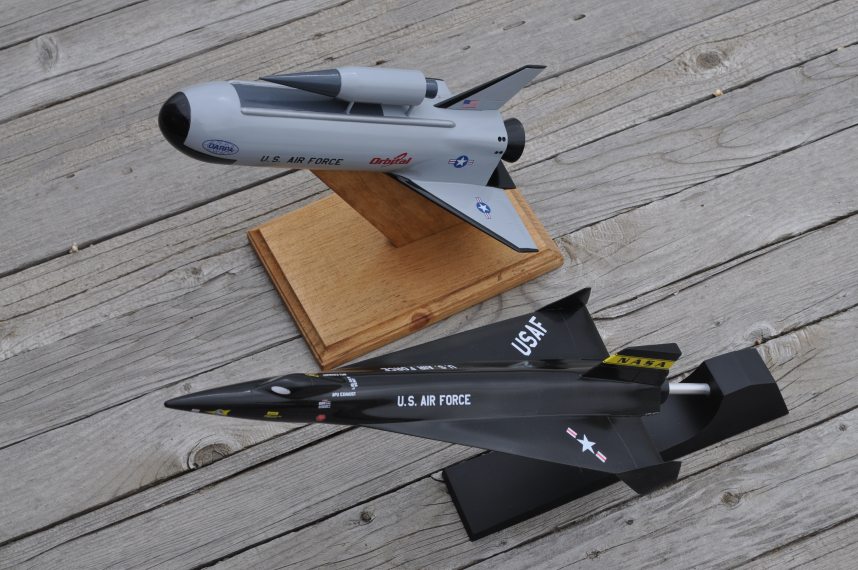
DARPA To Start Reusable Launch Vehicle Program
Short form: a spaceplane to fly 10 times in 10 days (which would necessitate a system that is reliable, rugged and needs relatively little and cheap maintenance) that can fly up to Mach 10 (ouch… harsh) and carry a payload that could eventually translate into an upper stage capable of putting 1,800 kilograms into orbit for no more than $5M per launch.
DARPA released a few bits of concept art showing winged vehicles, but the XS-1 need not be winged… a DC-X clone might do the job. Illustrations taken from the presentation HERE.
The Mach 10 requirement is odd and confusing. The math on launch vehicle design rarely requires that a multistage launcher stage off the first stage much faster than Mach 5.
An Industry Day is coming in early October.
During the heady days of the late 1970’s/early 1980’s Solar Power Satellite program, a number of fairly large launch vehicles were designed to haul the vast amounts of material needed in orbit. One that received a fair amount of press was a Boeing single stage to orbit design. Basically shaped like a Mercury capsule, this design became known as “Big Onion.” It’s unclear exactly how it got that name, and by whom; no official Boeing model number is known for it.
The Big Onion and the other heavy lifters of the time were not as powerful as the Post-Saturn vehicles studied a decade earlier. Where the earlier designs had million-pound payloads, “Big Onion” and its ilk topped out at around half a million. The purpose was low cost transport of vast quantities of material, not the largest possible payload in one shot.
Issue number 4 of US Bomber Projects is now available (for background, see HERE). This issue includes:
McDonnell System 464L: McDonnell’s entry into the initial Dyna Soar contest, 1958
Lockheed-Martin Falcon: A recent design for an unmanned hypersonic global range bomber
Lockheed Senior Peg: Lockheed’s competitor to the Northrop B-2
Boeing Mobile Missile Carrier: A giant hydrogen fueled amphibian
Boeing Model 701-273-4: A very asymmetrical supersonic predecessor to the B-59
Lockheed Cruise Missile Carrier: A large nuclear-powered cargo plane converted to carry 90 cruise missiles
Boeing Model 462-5: A six-turboprop B-52 ancestor
Martin Model 223-4: A twin-fuselage design on the road to the B-48
USBP#04 can be downloaded as a PDF file for only $4.25:
——–
Issue number 3 of US Bomber Projects is now available (for background, see HERE). This issue includes:
- Rockwell D 645-4A: A compact stealthy flying wing
- Lockheed System 464L: Lockheed’s entry into the initial Dyna Soar program, 1958
- Convair Mach 4 “Rollover:” A Mach 4 seaplane with a unique approach
- Boeing Model 701-273-3: An asymmetrical supersonic precursor to the B-59
- Boeing HSCT Model 1080-854: A late 1980’s missile carrier derivative of a commercial supersonic transport
- Martin Model 223-3: A canard antecedent to the B-48
- Boeing Model 462: A large six-turboprop ancestor of the B-52
USBP#03 can be downloaded as a PDF file for only $4.25:
——–
———

